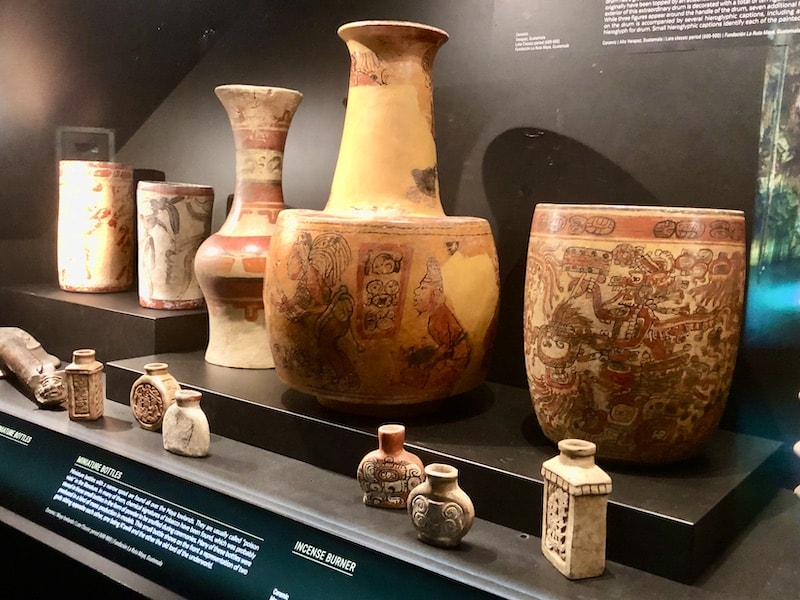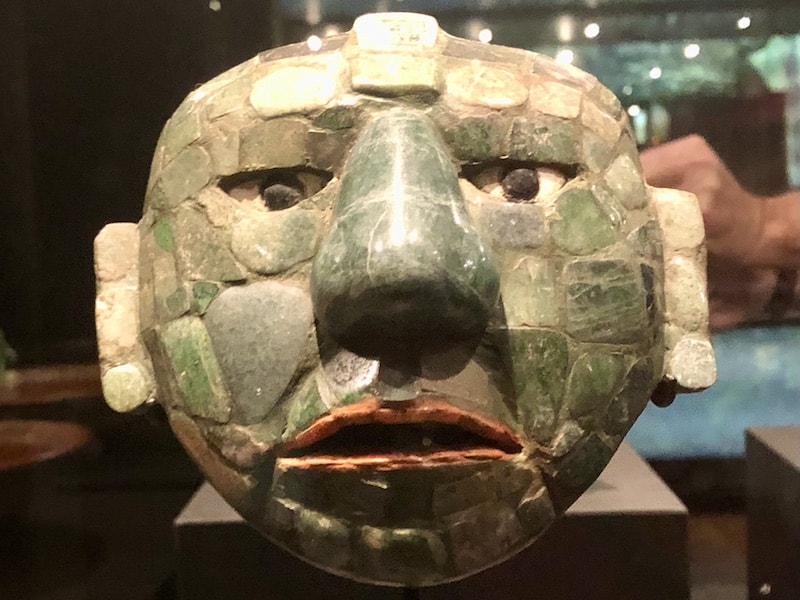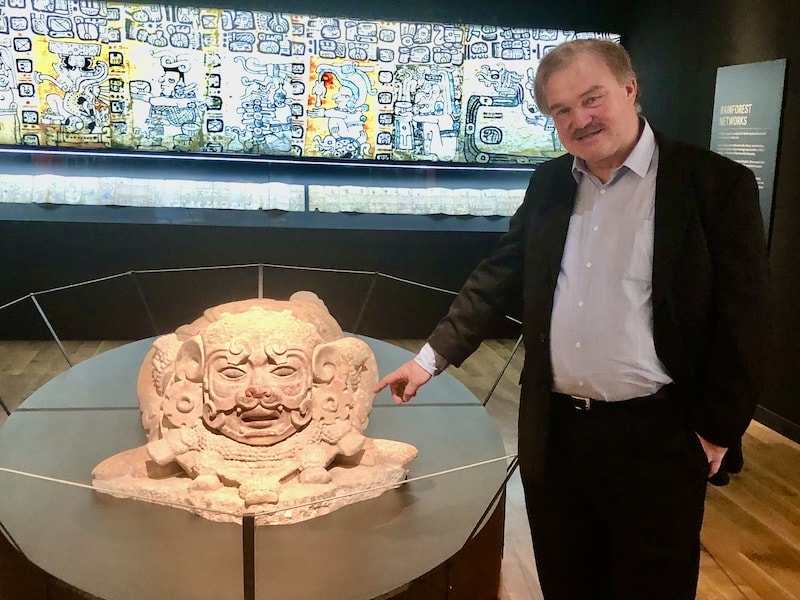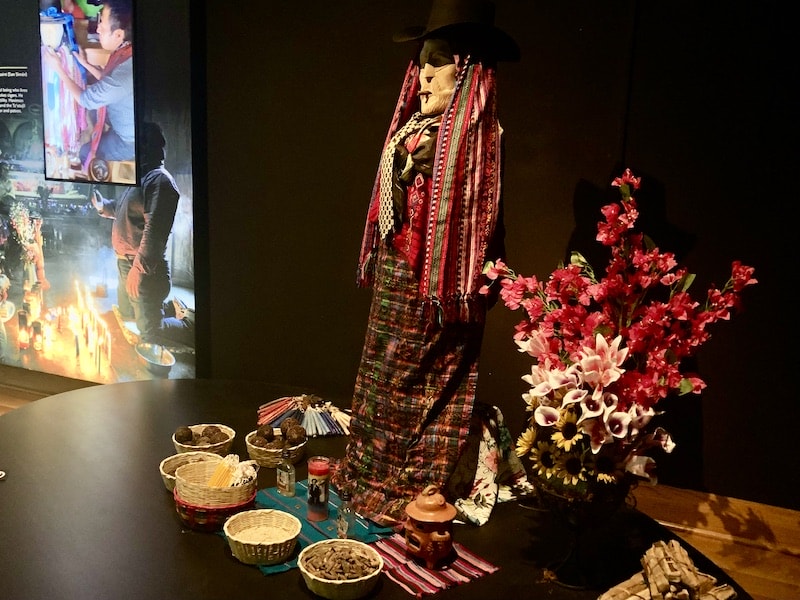Union Station Only U.S. Stop for Major Maya Exhibition

Published August 30th, 2022 at 11:30 AM
By Kevin Collison
Union Station’s new “Maya: The Great Jaguar Rises” exhibition vividly tells the little-known story of the ancient civilization that dominated Central America for 1,500 years, but its arrival was far from timely.
The exhibition which runs through the end of this year originally was scheduled to begin in May, but bureaucratic delays, mostly by Guatemalan authorities, significantly delayed its arrival.
“The delays cost us about $1 million in anticipated revenue over the summer,” said George Guastello, president and CEO of Union Station.
“We wanted to open it after our Auschwitz exhibit because we knew it would be of interest to our Latino community and others.”
The exhibition was worth the wait.

Displays of ornate ceramic vessels and bowls made by Mayan artisans were brought from Guatemala.
The Mayan civilization, which was centered in the jungles of what is now Guatemala and adjoining countries, was a collection of 20 city-states that fought and traded with one another between 500 BC and 1000 AD.
The Union Station show, the only U.S. site, displays the colorful ceramic bowls and vessels, conch shell instruments, carved jade, stone altars, massive tablets of Maya script and statues of deities that were created by artisans in each city-state.
The show-stopper is the 10-foot long “Jaguar Man” stucco sculpture. The half-ton artifact served an unknown purpose at the city-state it was found, but its powerful artistry resonates through the centuries.
“The exhibition is a general introduction to the Mayan culture with a focus on its continuity to this day,” said Nikolai Grube, the chairman of the anthropology department at the University of Bonn in Germany.
“It also goes into our recent research and what we’ve learned. Our image of the Mayan has changed radically over the past couple years.”

Jade was the most highly-prized substance in the Mayan culture and was used to fashion this ceremonial mask.
While the Mayan civilization is sometime lumped with the Aztecs, who dominated what is now Mexican, and the Incans of Peru and the Andes, it differed significantly. For example, the Mayans most valued substance was jade, not gold.
The Mayans also were not as obsessed with human sacrifice as the neighboring cultures. While they often killed captured warriors, they did not routinely sacrifice humans to their gods.
Besides the artifacts, the exhibition includes a computer-generated video of life in a typical Mayan village in about 500 AD. There’s also an interactive depiction of Tikal, a city-state of 70,000 people, from about 300 AD.
At several places, reproductions of objects and models of temples are placed for children to touch. There’s even a bowling-ball sized replica of a rubber ball used in Mayan games they can lift.

Nikolai Grube, chairman of the anthropology department at the University of Bonn in Germany helped organize the exhibit.
The Mayan civilization collapsed a thousand years ago after being weakened by constant warring between the city-states and pressure from stronger rivals to the north. It later revived in the Yucatan peninsula where it was finally crushed by the Spaniards in the 1500s.
The Mayan people however, continue to live throughout Central America. The exhibition has displays of the colorful textiles and other objects of the native people, and a video of contemporary speakers of the myriad dialects of the Mayan language.
Grube helped organize the exhibition which was produced by MuseumsPartner and features Pre-Columbian works of art controlled by the Fundación La Ruta Maya, a museum in Guatemala.
Many of the objects originally were looted from the sites of ruined Mayan cities in the jungles of Central America and sold to private collectors. Over the years, Guatemala has managed to have many of them repatriated to their original home.

The exhibition includes displays of current Mayan culture including this altar and a folk deity.
Guastello said the effort to bring the exhibition to Union Station began several years ago.
“We were invited to Guatemala in 2019 to go to Tikal (National Park) and tour their facility,” he said.
“We spent the night in Tikal and the jungle and watched the sun rise over all the monuments.”
The plan to include Kansas City on an earlier tour of the exhibition fell apart when Covid forced it to cancel. The artifacts returned to Guatemala and the government was reluctant to send them abroad again.
Union Station believed they’d reached an agreement to have the show come here in May and built custom displays for them. At the last minute, the government balked and required exhaustive paperwork to be completed before finally releasing them Aug. 12.
Tickets are available through the Union Station website. Admission for adults is $19.50; children, $14.50; a member adult and child, $14, and groups can purchase tickets for $10 per person. A 10 percent preservation fee also is charged per ticket.


